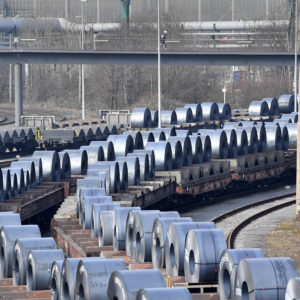All consumers (even Bill Gates) know that the sticker price of an item is never its final price. There are, of course, often-hefty state and local taxes that can add nearly 10 percent to the final bill. On top of these taxes are hidden federal fees (from tariffs) that, on average, hit most everyday items with a 2 percent tax. The American tariff system, which spans nearly 4,000 pages via the Harmonized Tariff Schedule, punishes customers for having the audacity to buy inexpensive foreign imports for their families or businesses.
Despite tax reform lowering costs for more than 90 percent of American families, the Trump administration seems intent on reversing those gains by imposing additional tariffs on countries that don’t “play fair.” Careening the United States toward a trade war will only cause countries to double down on their own trade subsidies and quotas, while hurting hundreds of millions of consumers across the country.
It is a strange plot twist when a Republican president talks about higher tariffs while the former president, a Democrat, urged the passage of Trade Promotion Authority and the Trans-Pacific Partnership.
To Trump administration officials, such as Peter Navarro, impending tariffs on allies such as Canada and the European Union are a necessary corrective action to decades of unfair trade practices that have left America at a disadvantage. President Trump’s refusal to support a Group of Seven communique that urged countries to “reduce tariff barriers, non-tariff barriers and subsidies” was the result of deep-seated trade disagreements, particularly with Canada. The diplomatic row with Canada, and Navarro’s “flamboyant response” aside, the administration believes that higher domestic prices on imports will stem the bleeding of American jobs and force other countries to the negotiating table.
But the evidence simply doesn’t bear this out. In 2012, the Petersen Institute for International Economics found that tariffs on Chinese tire imports between 2009 to 2011 cost American customers more than a billion dollars, while saving only 1,200 jobs. That means each job saved cost the economy $830,000. Even this high figure fails to take into account the blowback that happens when tariffs are raised.
In particular, American farmers have been rightfully squealing since April, as Mexico and China have been targeting the American pork industry in counterattacks to U.S. tariffs. Mexico slapped a 20 percent duty on American pork products, while China tripled its own pig pittance from 12 percent to 37 percent. The European Union has suggested increased tariffs on whiskey and motorcycles.
Because countries often hit back in trade wars, slapping tariffs on imports may actually lead to job losses. More than 200,000 jobs were lost as a direct result of George W. Bush’s increased tariffs on steel in 2002.
Just because the “solution” of tariffs is a destructive one doesn’t mean that the status-quo is working out. Mexico and Canada, for instance, don’t always do their due diligence in making sure that American companies doing business in their countries have intellectual property protections. The Canadian government, for instance, has asserted the ability to examine the case-by-case “utility” of upholding patents and copyrights, leaving valuable IP arbitrarily in the hands of a handful of bureaucrats.
But contrary to the declarations of trade protectionists, another way forward is possible. Further trade talks, rather than threats to impose tariffs, have a storied track record in achieving lower taxes for all parties involved.
Committing to steady tariff reductions, rather than threatening to jack up rates on American customers, is a surefire way to protect families and businesses. With multilateral tariff reduction, shoppers can finally look forward to an extra 2 percent back on their purchases.

